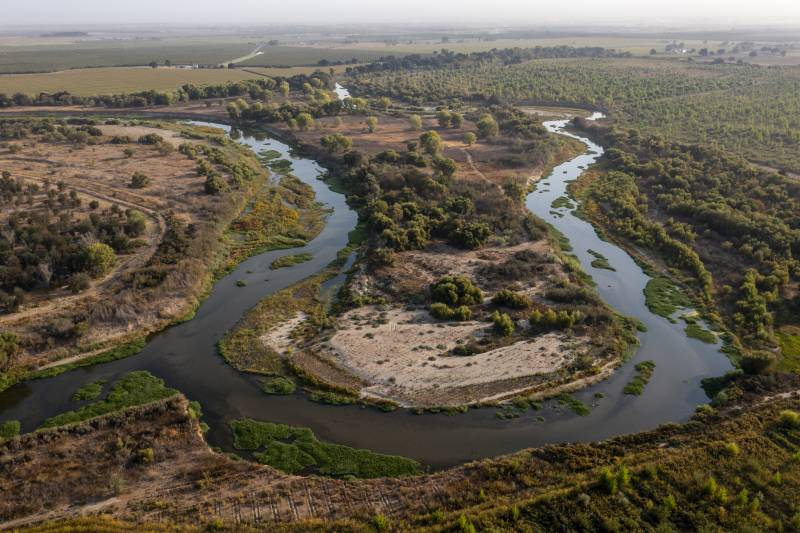Here are the morning’s top stories on Tuesday, November 26, 2024…
- Environmental groups and irrigation districts are working to bring more salmon back to the Tuolumne River near Modesto. Salmon used to thrive in California, but decades of environmental degradation have reduced their population to about 1% of historical levels. Now people are trying to help them recover by rebuilding their habitat, but environmentalists argue that what’s really needed is just more water.
- Governor Gavin Newsom is continuing his tour of the Central Valley, highlighting his plans to create new jobs as the state transitions to a green economy.
Salmon Seen As Key To Healthy Tuolumne River
Work is underway on salmon habitat restoration sites on the Tuolumne River. Salmon were once plentiful in California. But then came the Gold Rush and dredging machines started plowing deep channels and ponds, sorting the rocks on the river bottoms for bits of gold and other metals.
The Tuolumne River Trust is among the groups looking to restore the salmon habitat on the river. But there are other challenges. Striped bass from the East Coast were introduced in the late 1800s for sport fishing. It turns out, they eat baby salmon. But they like deep water. So rebuilding shallow floodplains is a way to give those baby salmon a chance.
There’s another major factor stacked against the salmon. And that’s dams. Nann Fangue is a professor at UC Davis who studies endangered native fish in California. “If you are short on cold water, you see fewer fish make it. Higher mortality.” Fangue said. Dams have separated the salmon on the Central Valley floor from the cold water they need to survive – upstream in the Sierra foothills.
Newsom Continues Jobs First Tour
Governor Gavin Newsom says California’s Central Valley will not get left behind as the state develops a green economy. It’s the second region in the state to submit a 20-year economic development plan, with a goal of boosting jobs in agriculture, industry and manufacturing.
